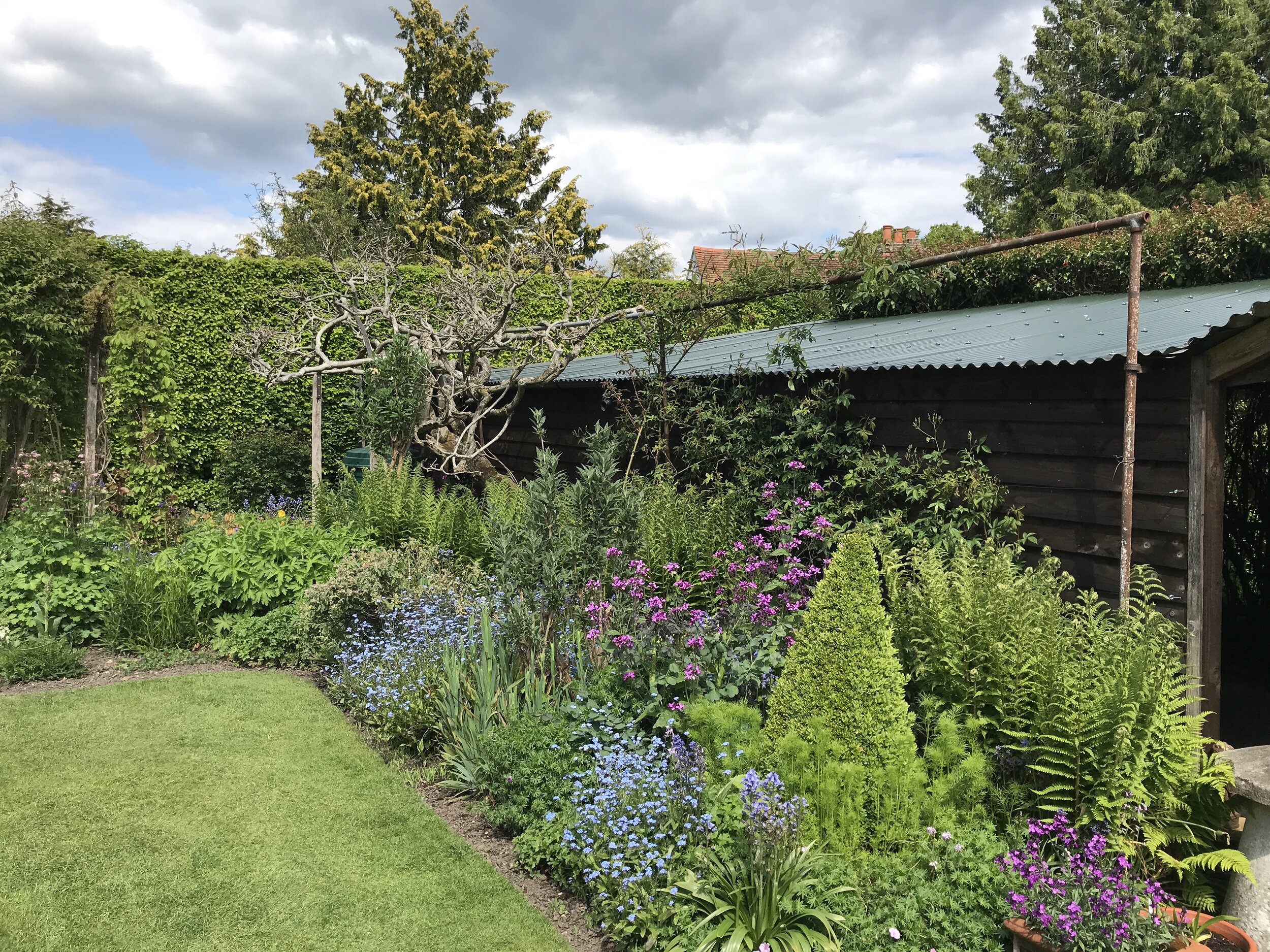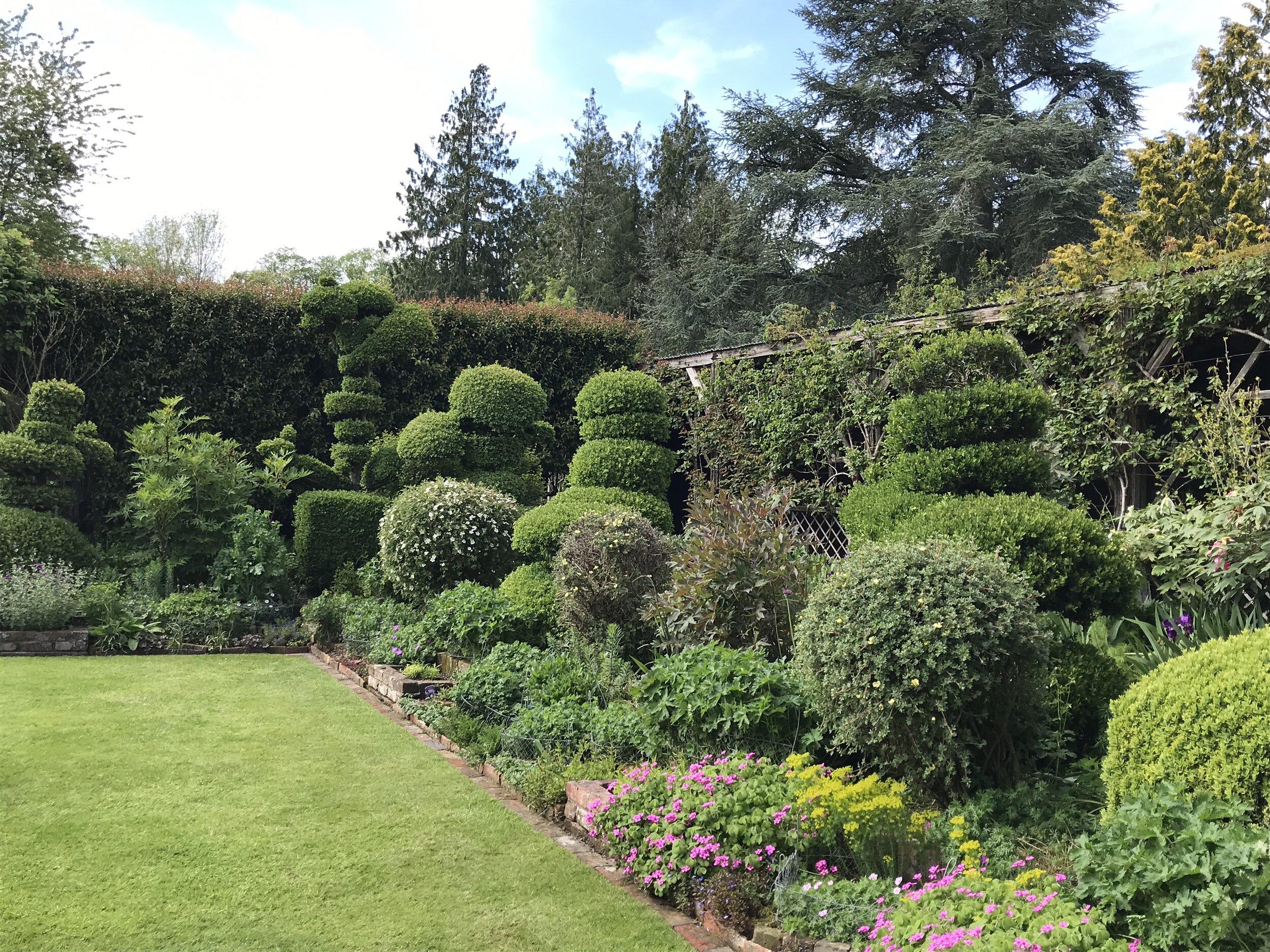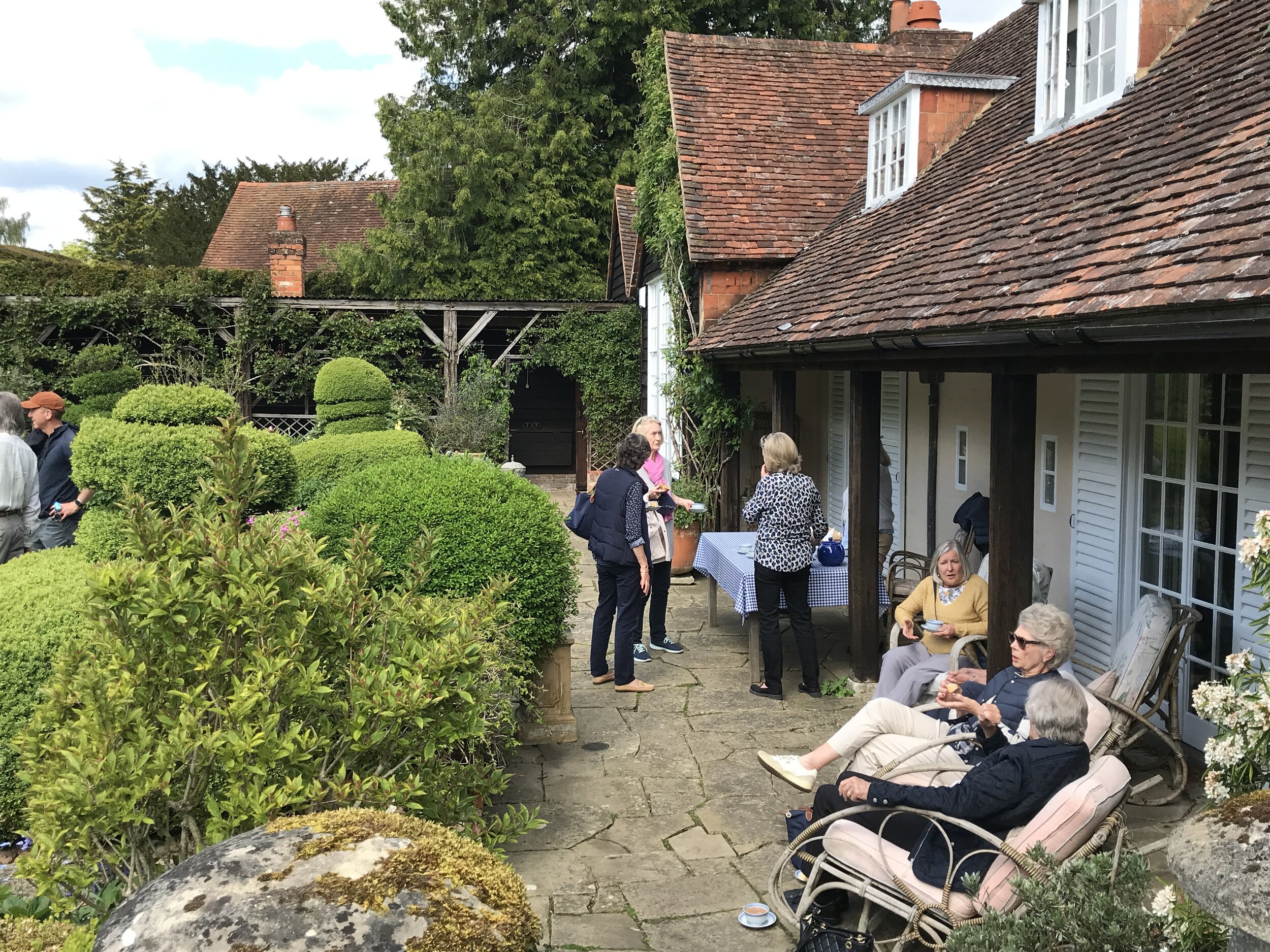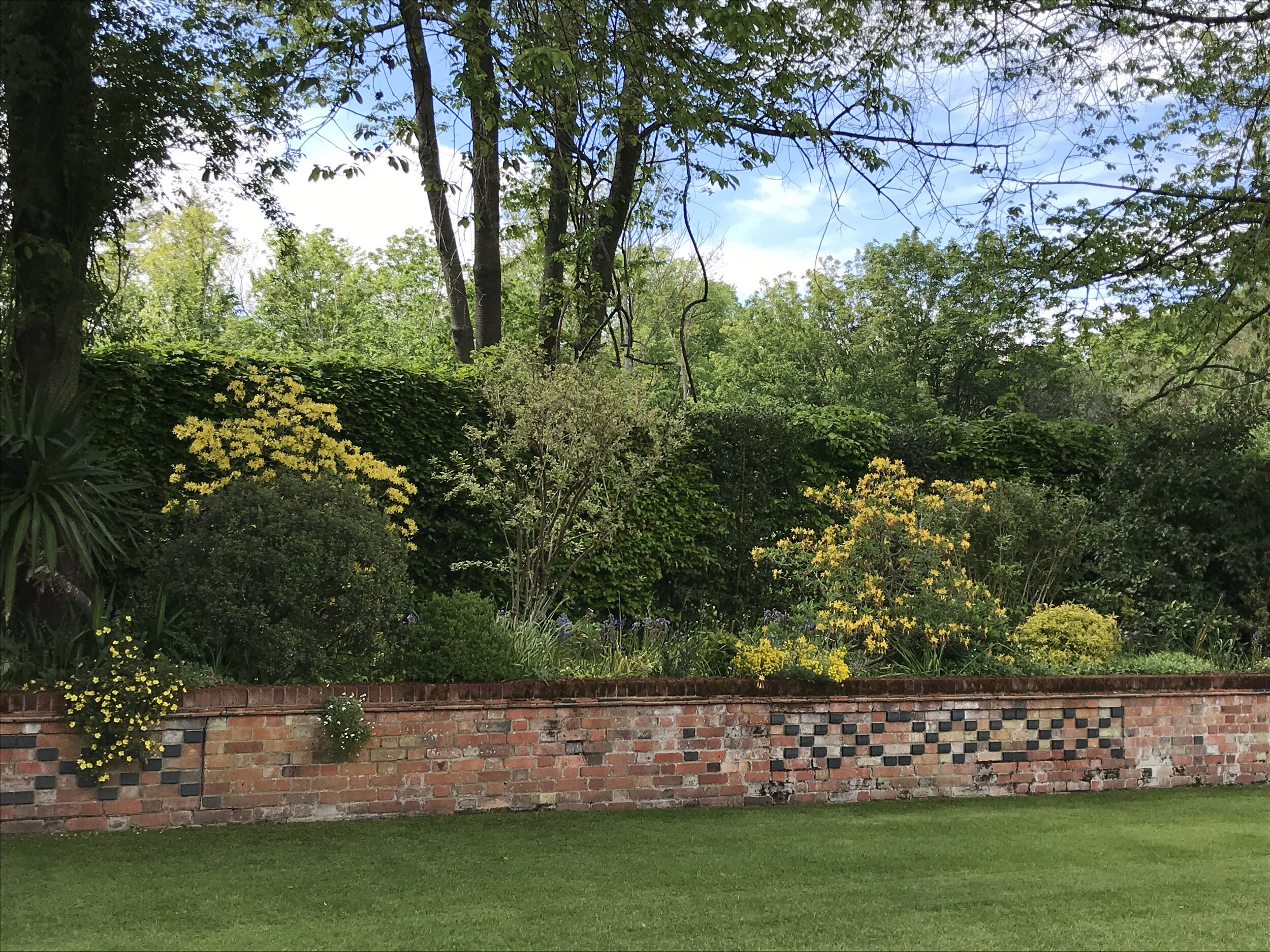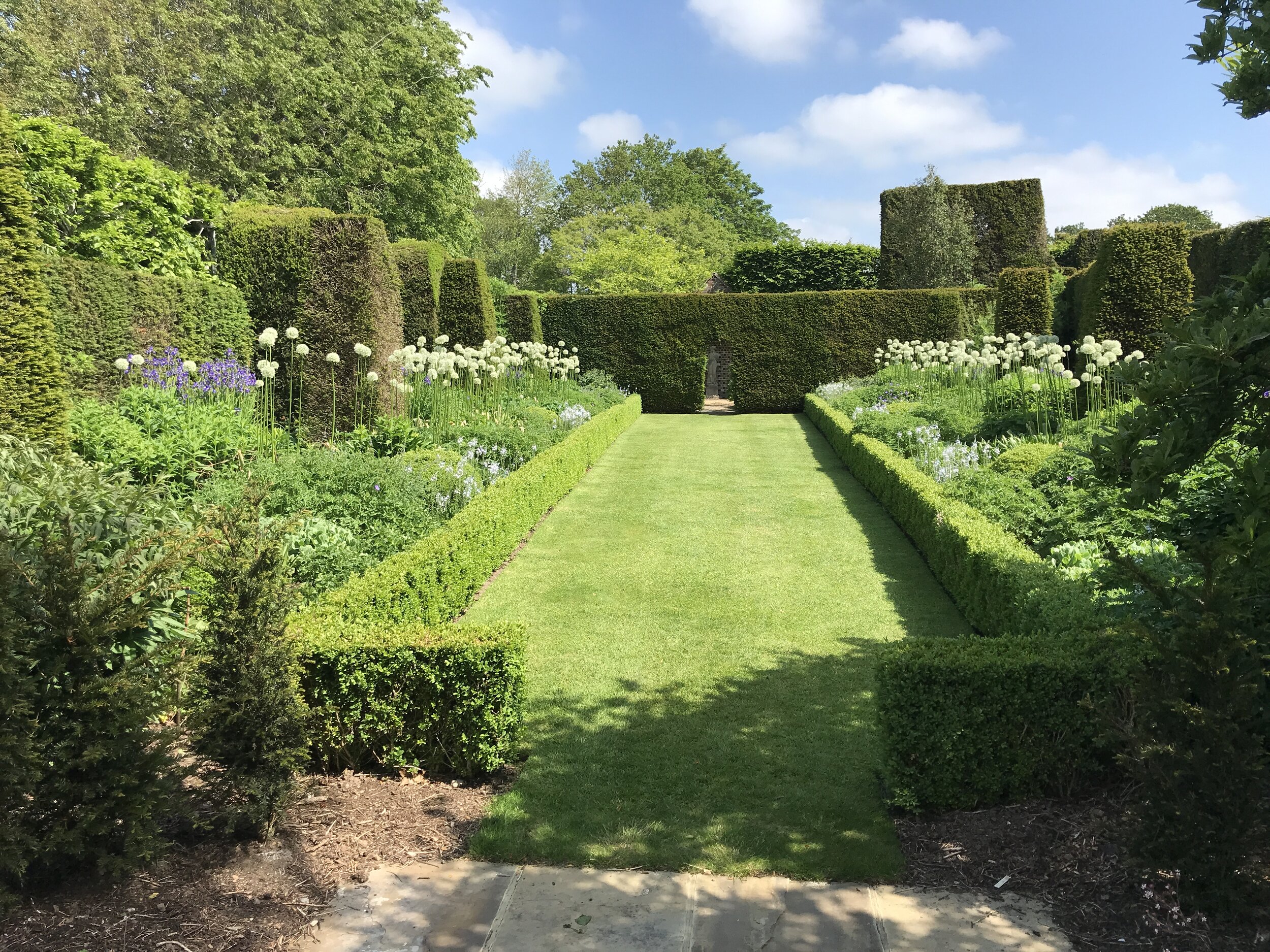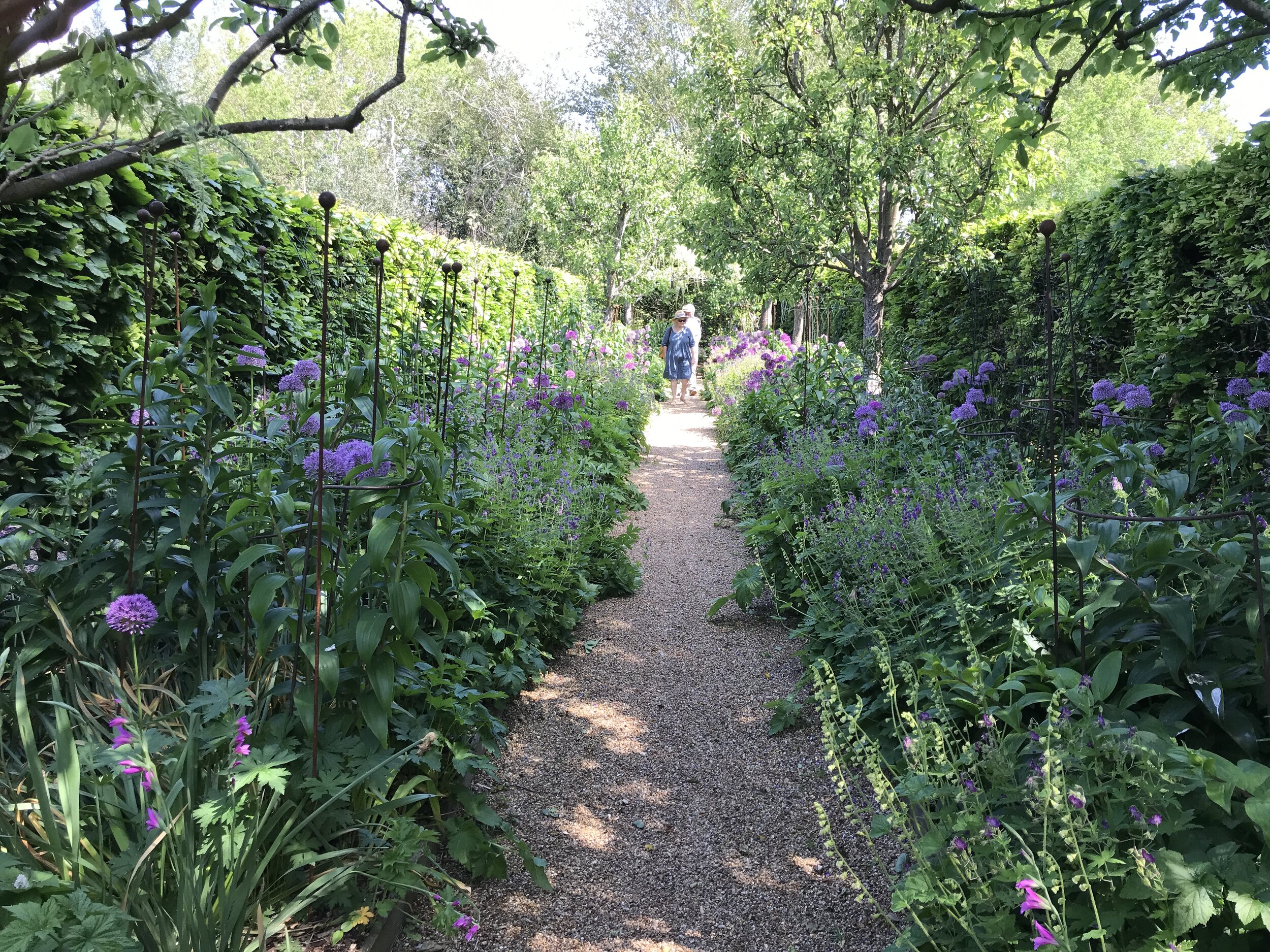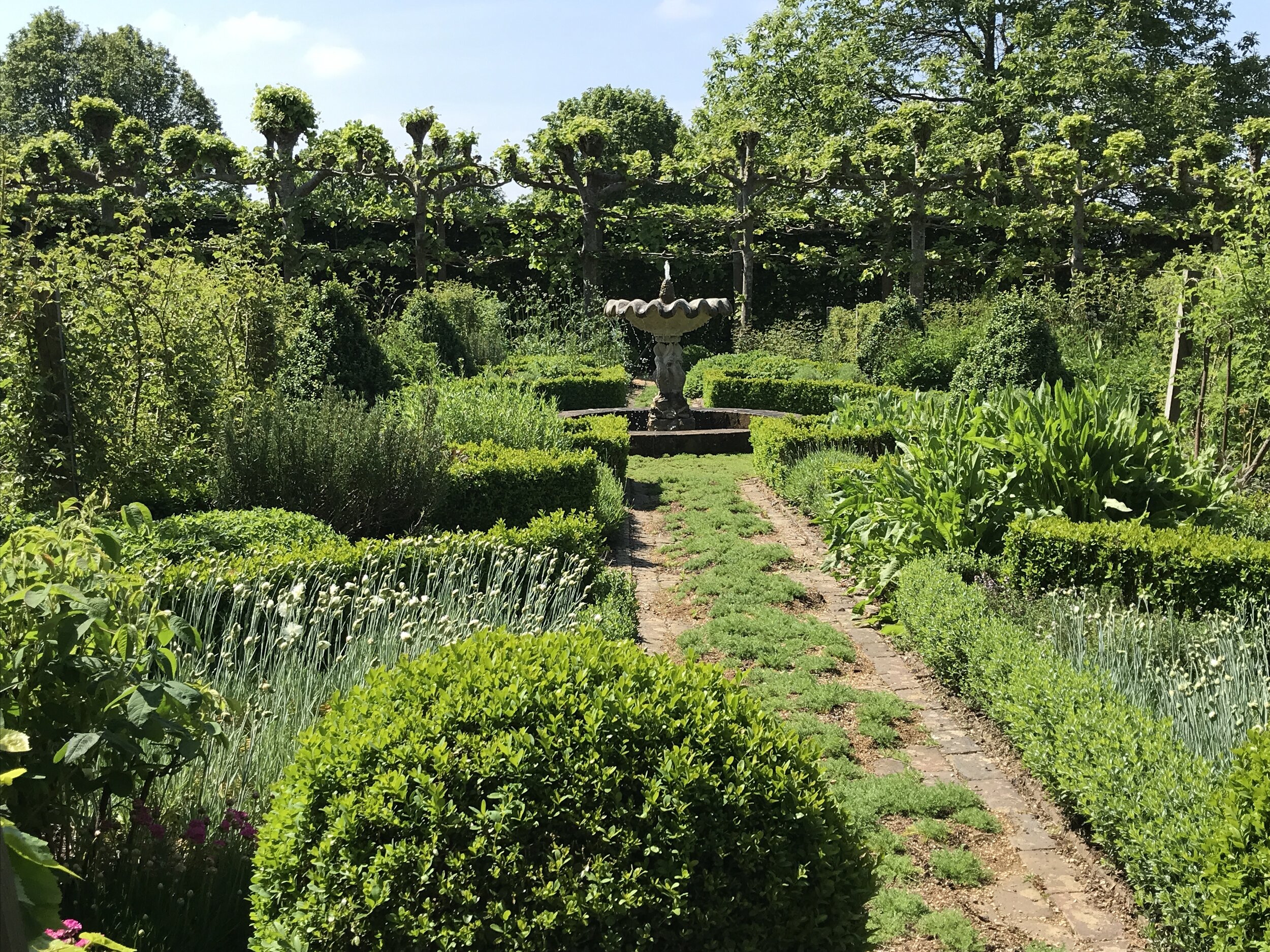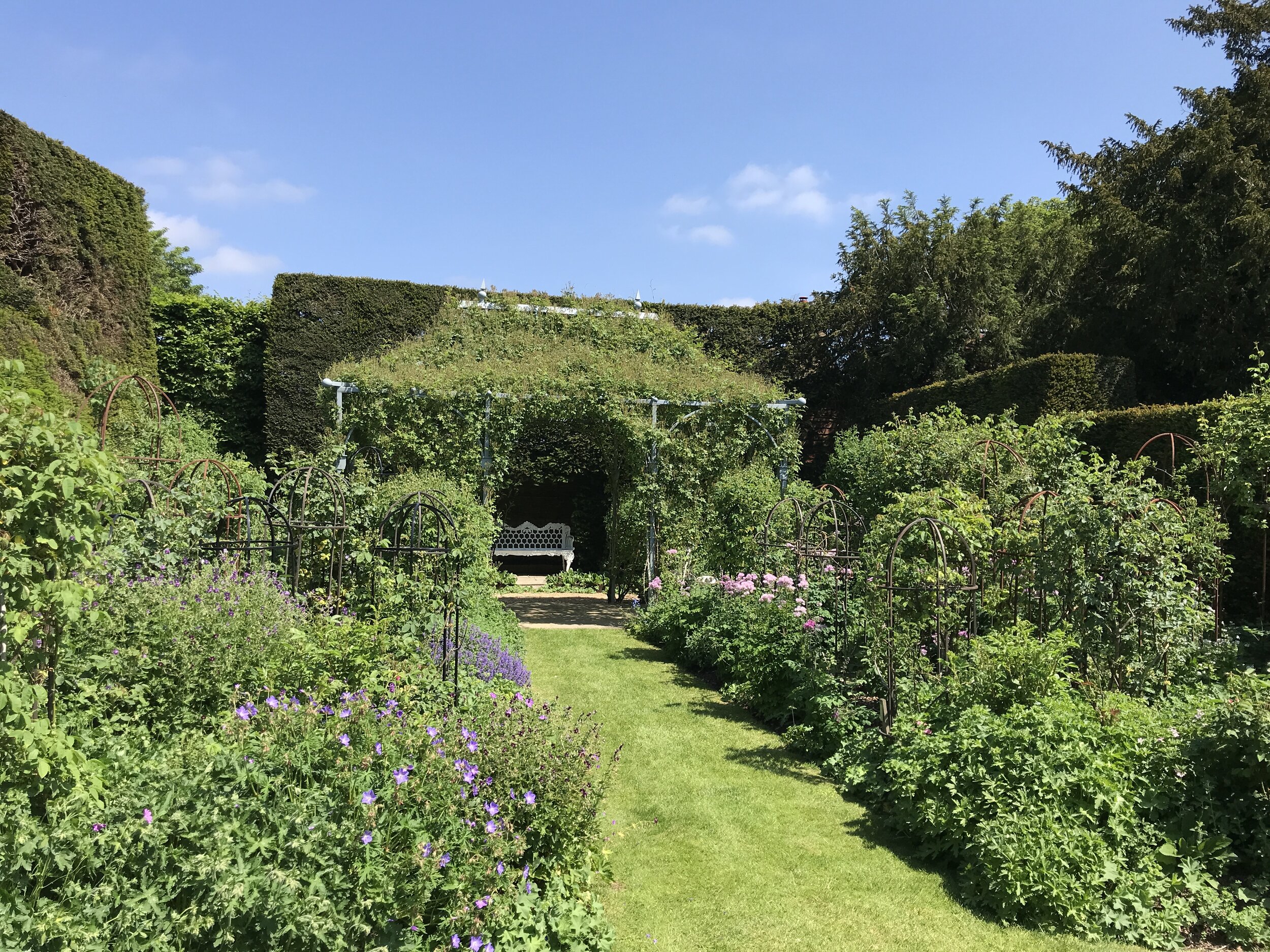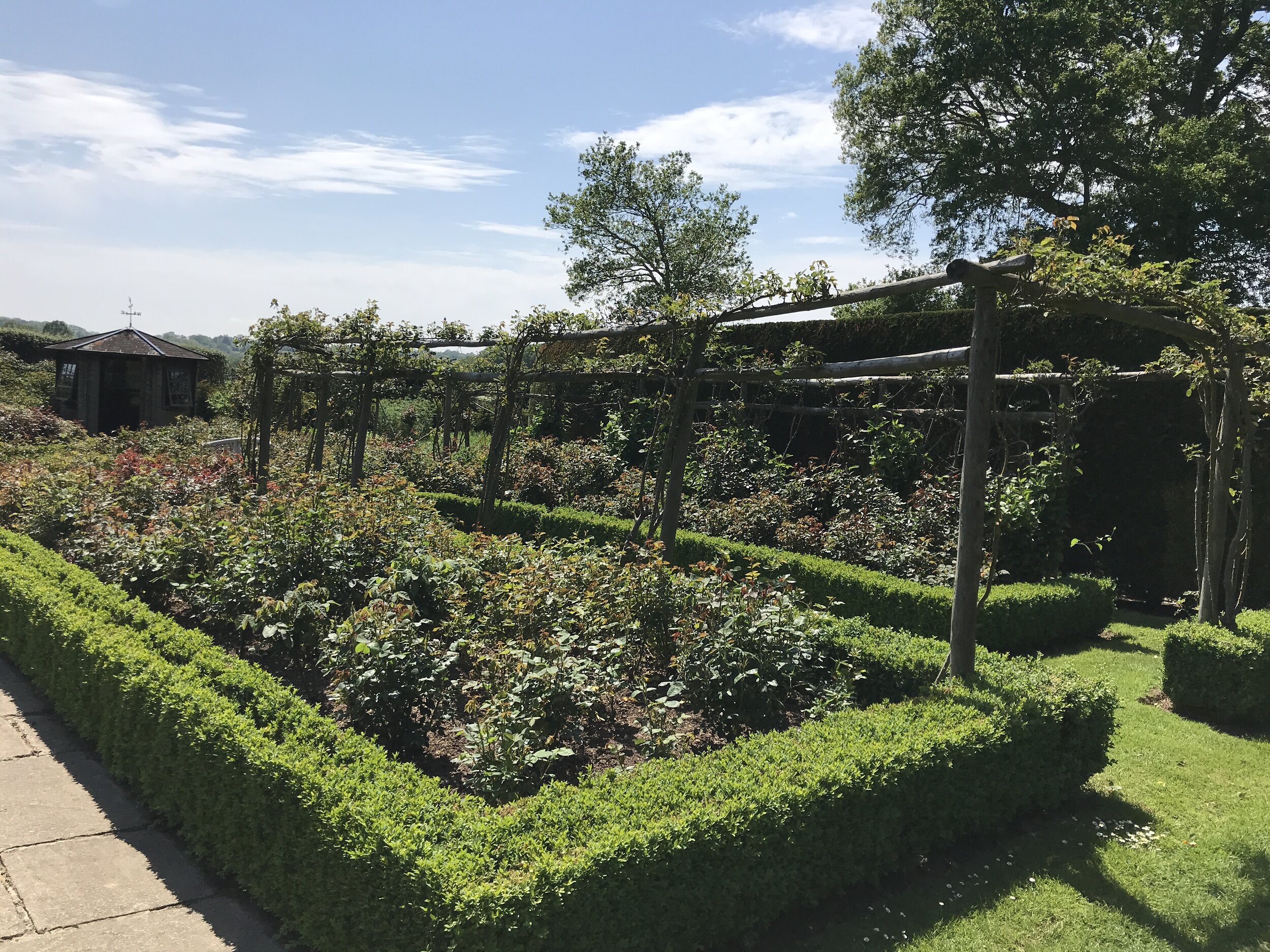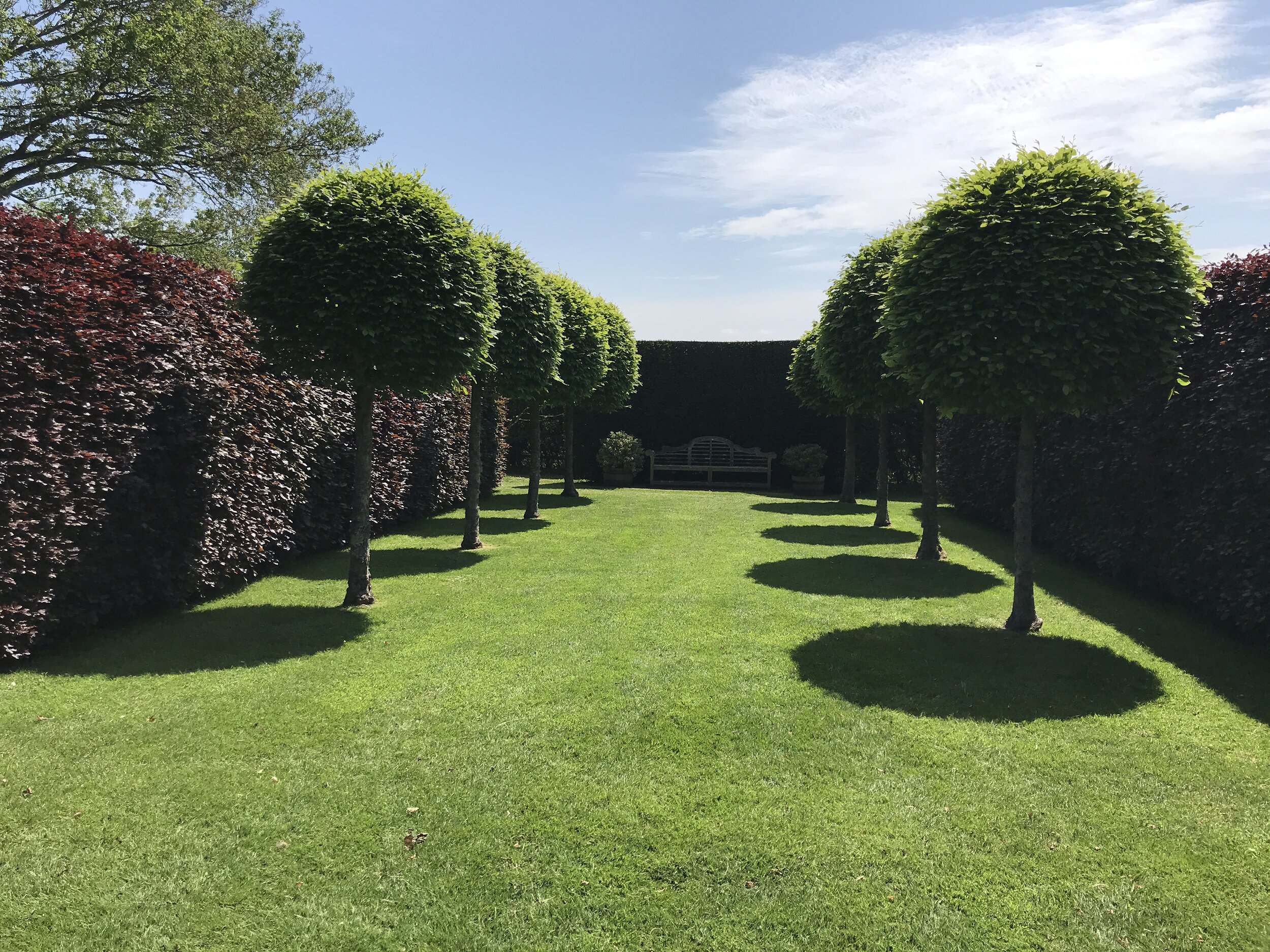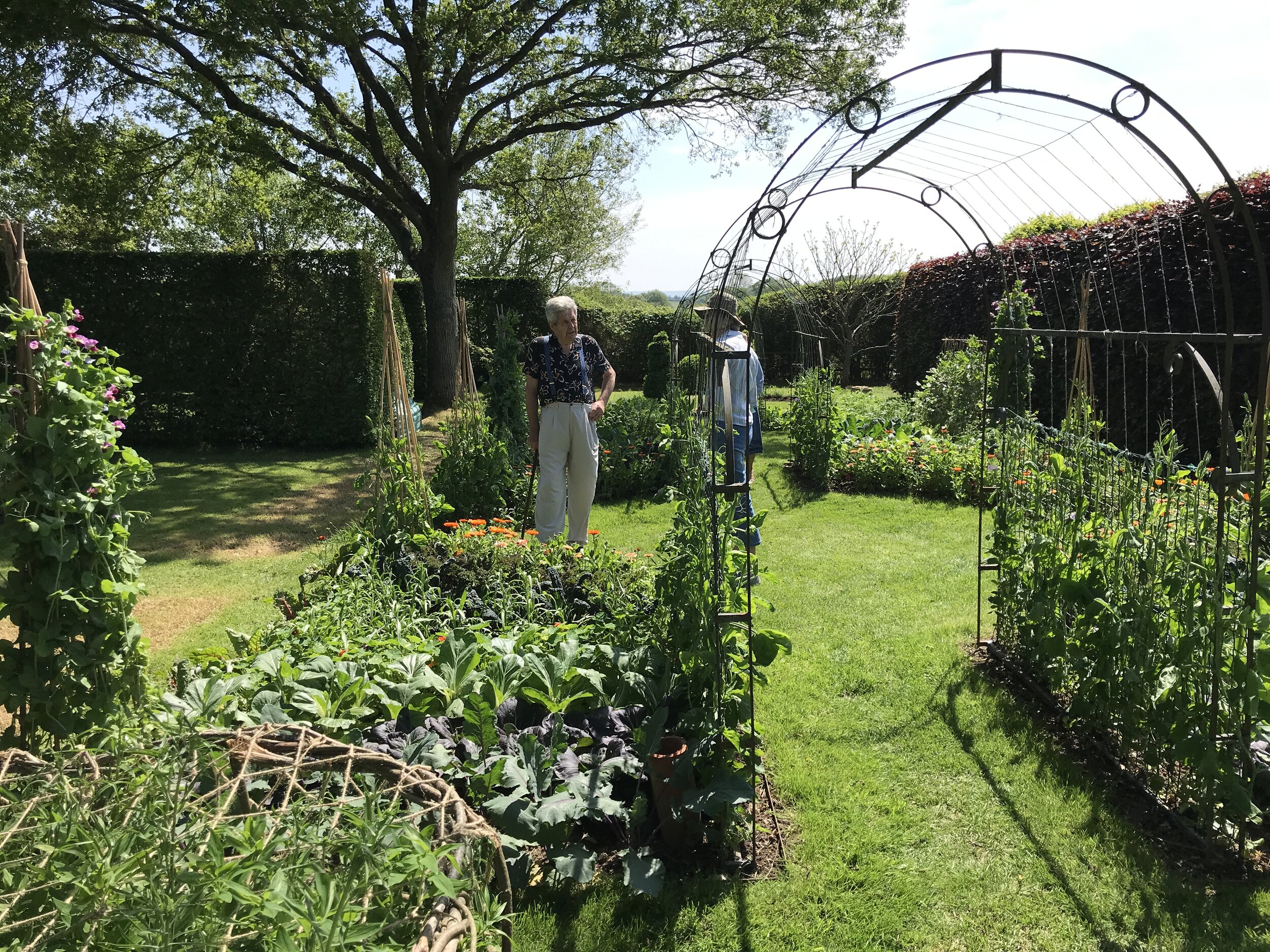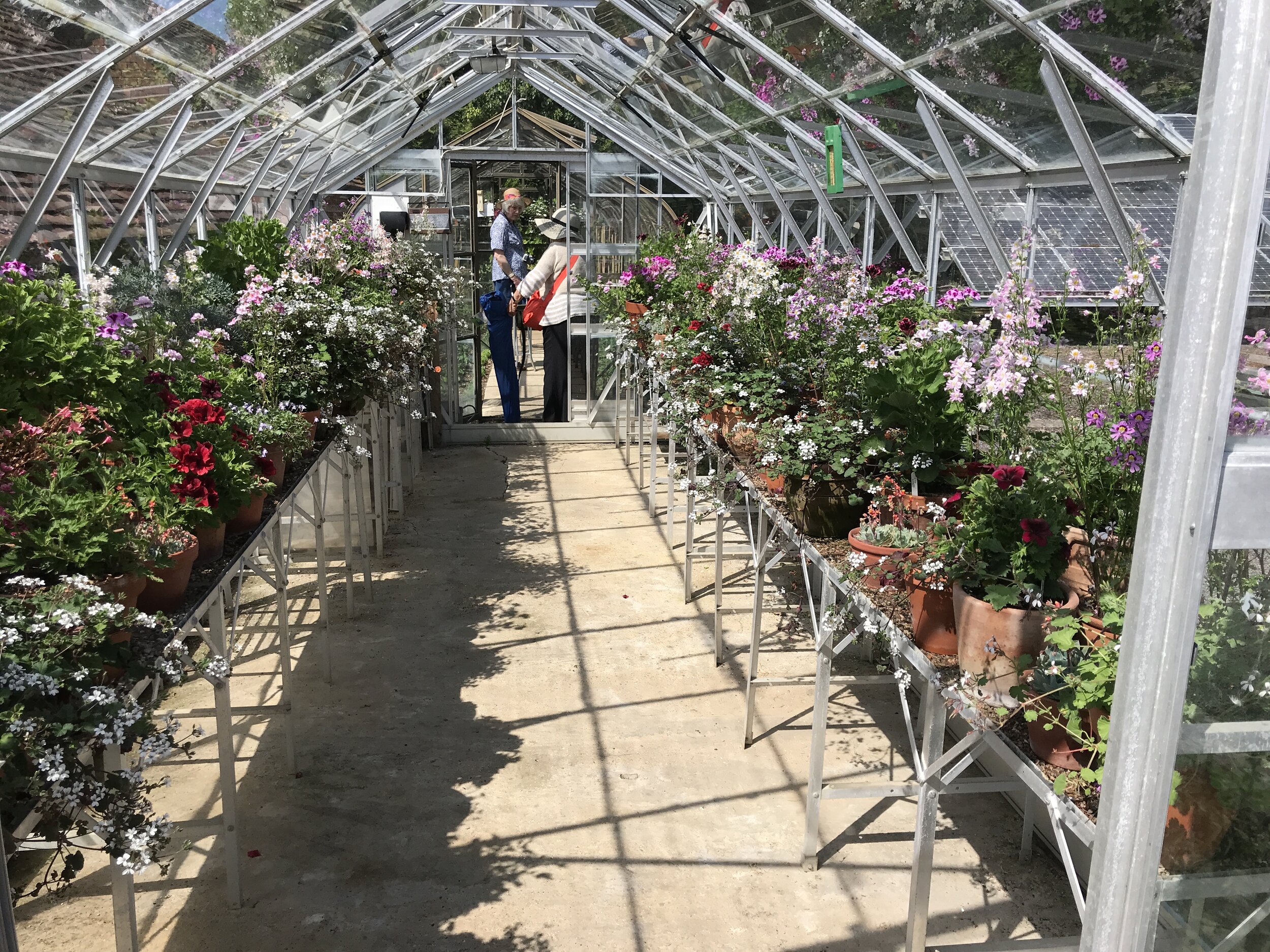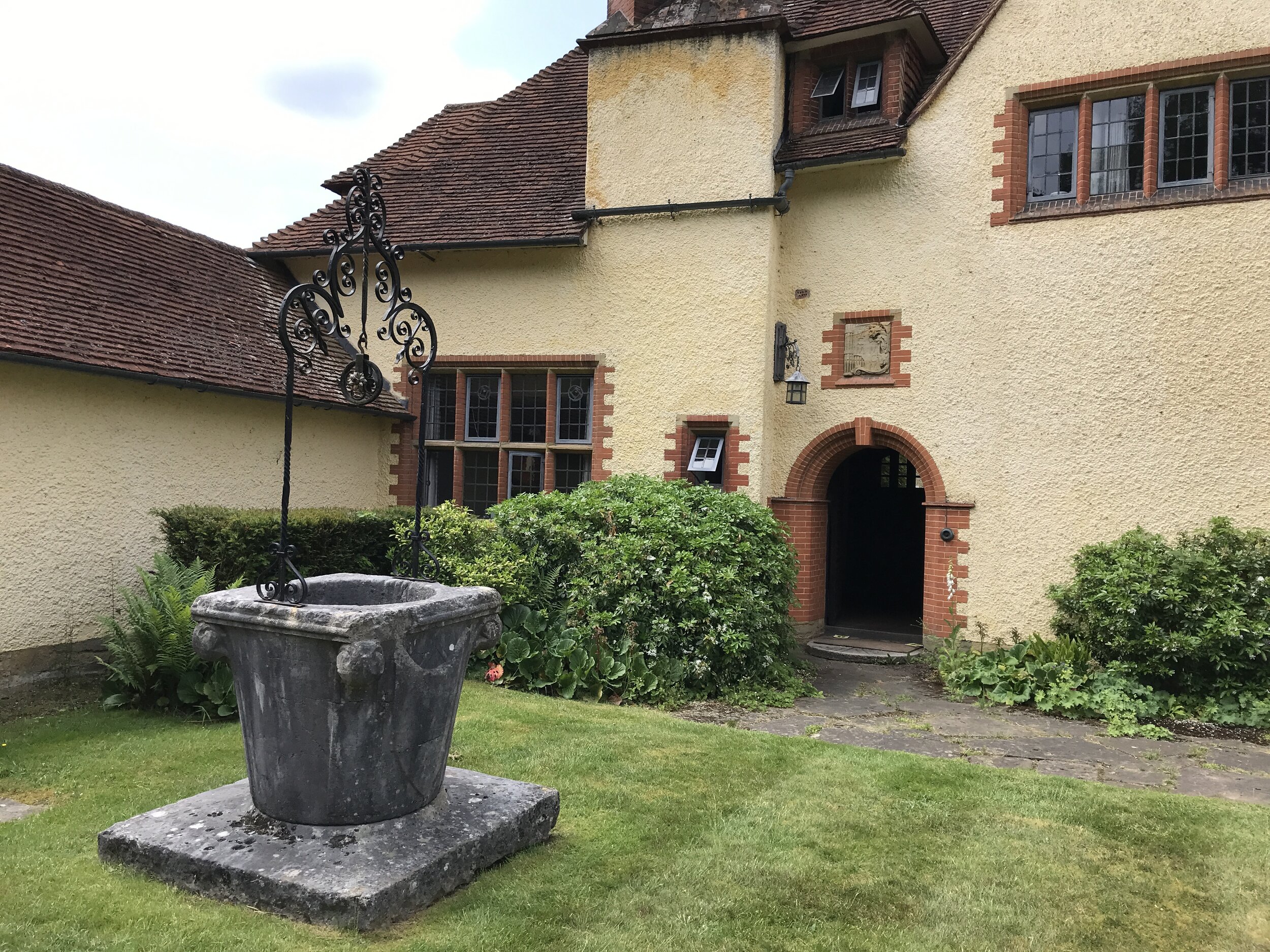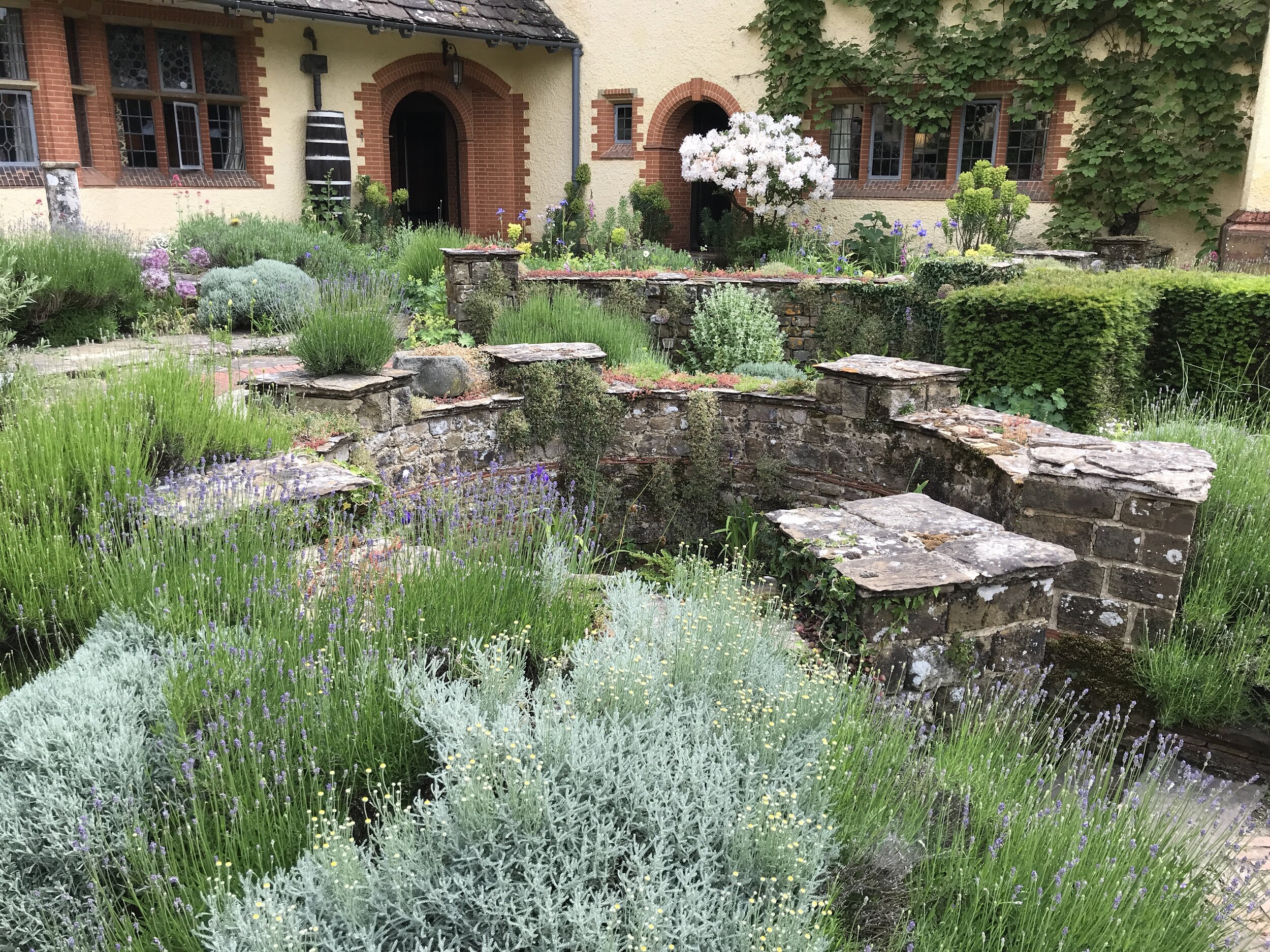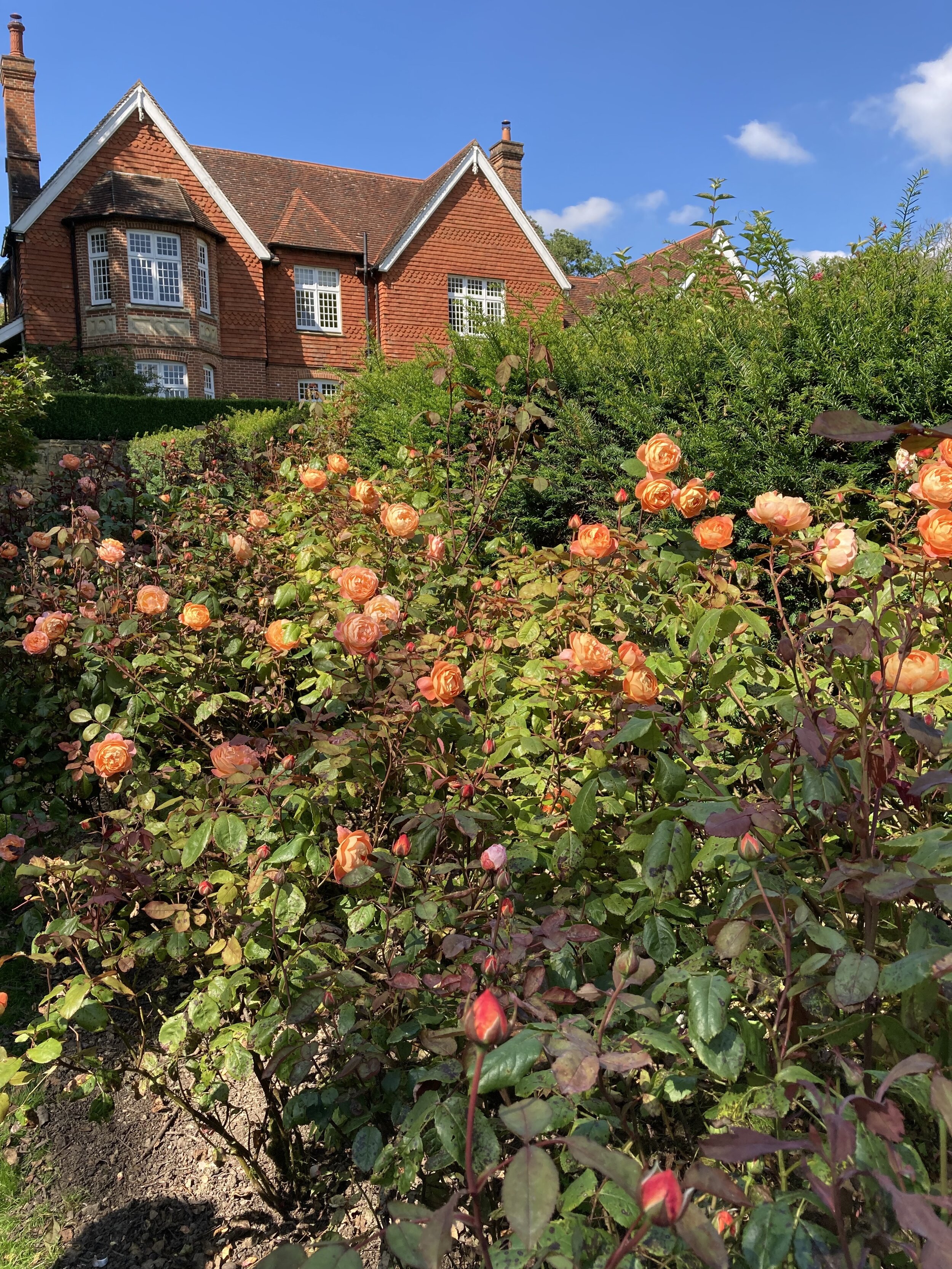Garden Visits 2021
Weirs barn, hartley wintney
27 may 2021
Weirs Barn is a Grade II* listed barn surrounded by a beautiful Arts & Crafts garden both of which were designed by architect Robert Weir Schultz. In the early 20th century Robert Weir Schultz bought a farmhouse and surrounding barns, converting the 16th-century barn for his own occupation and lived there until his death in 1951. He gradually transformed the land from fields into a series of ‘garden rooms’, by planting topiary hedges and a shelterbelt of trees to give protection and privacy. The overall structure of the garden remains much as it was in Schultz’s time, having been lovingly restored by the current owners who acquired the property in 1986 from Schultz’s cousin.
True to the Arts & Crafts style, this 2.5 acre garden contains topiary peacocks, hedges, a tennis lawn, sunken garden, croquet lawn, an old mulberry tree, hooped border and a nuttery. The owner continues to extend the garden and has created many areas of naturalised bulbs, wildflowers and cottage-style informal planting.
clinton lodge gardens,
east sussex
3 June 2021
Over the past 30 years Lady Collum has painstakingly developed a beautiful 6-acre formal and romantic garden at Clinton Lodge, with spectacular views overlooking parkland. The house itself dates from the 17th century with a significant 18th-century façade. The garden has been largely divided by hedges into smaller gardens or rooms, reflecting various periods of garden design. Starting with a small knot garden, a copy of an Elizabethan herb garden with chamomile paths and turf seats, a Medieval style potager, wild flower meadow, a pre-Raphaelite allee of white wisteria, clematis and lilies, broad double herbaceous borders of white and blue, the enclosed garden of old roses trained at nose height so that one can enjoy the scent, and a 20th- century swimming pool encircled by an arcade of apples.
town place gardens, west sussex
3 june 2021
Artist Maggie McGrath and her husband Anthony have created a stunning 3-acre garden around their 17th-century Sussex farmhouse. Having acquired the property some 30 years ago the garden has originated from the transformation of pastures into a garden with a growing international reputation for the quality of its design and planting. The structure of the garden is defined by extensive use of topiary using yew, box and hornbeam and includes shapes inspired by the sculptures of Henry Moore. The topiary provides a wonderful backdrop for exuberant herbaceous planting and an extensive collection of over 700 roses. Additional features include a herb garden, selection of ornamental grasses, an 800-year-old oak, potager, and a unique ruined Priory Church and Cloisters created in hornbeam.
goddards, abinger common
15 june 2021
Goddards was designed for Sir Frederich Mirrielees by Sir Edwin Lutyens in 1898-1900 and enlarged in 1910. Lutyen’s commission was to build a holiday rest home for ‘ladies of small means’. It is considered to be one of his most important early houses designed in the traditional Surrey style and with a garden laid out in collaboration with Gertrude Jekyll.
There are three main elements of Goddards - the house itself, the garden courts and the pasture beyond. Hedges, terraces and walls, connected by axial routes, define each garden room. Throughout the house, Lutyens drew on the vernacular traditions of Surrey, and applied the principles of the Arts and Crafts movement. Mr and Mrs M W Hall gave Goddards to the Lutyens Trust in 1991, in memory of their architect son, Lee Heath Hall. However, running the house proved too expensive and in 1996 they handed it to the Landmark Trust on a long lease, keeping the Library as their headquarters.
The restoration of the garden, which is being funded by the Rufford Foundation, is intended to reinstate the ‘architectural' role of the hedges as originally intended, later planting alterations are being simplified, and beds are being replanted with the grey, silver and scented plants that were listed in Jekyll's plan for Munstead Wood as no planting plans are known to exist for Goddards.
folly farm, berkshire
1 july 2021
Designed in 1912, Folly Farm is considered to be one of the most complex and interesting of all the garden collaborations between architect Sir Edwin Lutyens and Gertrude Jekyll. The main gardens were laid out in tune with the Arts & Crafts principles employed at the time with a collection of contrasting garden rooms divided by yew hedges and linked by herringbone brick paths. Thanks to the original fine craftsmanship and use of quality materials the garden continues to stand the test of time, although the current owners who arrived in 2007 found it in much need of repair.
After extensive historical research the many elements, including the glasshouses and brickwork paths were reinstated. In 2009, Dan Pearson was asked to develop further parts of the garden bringing a new, contemporary feel to the historical landscape. New planting schemes sympathetic to Jekyll’s ‘spirit’ were devised for the borders in the main garden rooms that had been more recently laid to lawn. On the outer edges of the property, Dan Pearson has adopted a more naturalistic style of planting, including meadows, rilled watercourse and new pond thus taking into consideration the wider landscape. In addition, a kitchen garden has been installed in one of Lutyen’s original walled gardens that was never formally laid out in his time.
Pratsham grange, holmbury st mary
25 august 2021
Owners, Alan & Felicity Comber, have created a magnificent 5-acre garden at Pratsham Grange in Holmbury St Mary. The garden is divided into three different areas, each enjoying its own distinct feel but with an overlying order that creates a unified and complementary design.
The first section focuses on beds of scented roses in various geometrical shapes combined with long herbaceous borders. These borders can be enjoyed by walking down a broad avenue punctuated with rows of neatly clipped yews to provide year around interest and structure. In August, these herbaceous borders will be awash with crocosmia, phlox, asters and other late summer flowering plants. The roses, most of which are repeat flowering, should also be producing their second bloom. The second area is dominated by a spiralling buxus knot garden that is interspersed with herbs as well as an orchard and productive kitchen garden. There is also a sizable cut flower garden, which provides flowers for the house. Finally, there are two naturalistic ponds joined by a cascading stream and surrounded by mature woodlands and borders planted with fuchsias and hydrangeas.
ramster gardens, chiddingfold
12 october 2021
Ramster Hall dates from the early 17th century and is surrounded by 250 acres of farmland and woods. Sir Harry Waechter, a businessman and philanthropist, purchased the property sometime between 1890 and 1900, and laid out the foundations of the present 20-acre garden with the help of Gauntletts of Chiddingfold, whose nursery adjoined the site. Gauntletts were specialists in importing Japanese plants and garden ornaments and the Japanese influence is still maintained in the garden today.
In 1922 Sir Henry and Lady Norman, who were keen horticulturalists, bought Ramster. Lady Norman was the daughter of Lord and Lady Aberconway and granddaughter of Henry Pochin who created Bodnant Gardens, Wales. More rhododendrons and azaleas were planted, some grown from seed brought back by plant collectors. Since 2005 Ramster has been run by the fourth generation of the family, Malcolm and Rosie Glaister.


